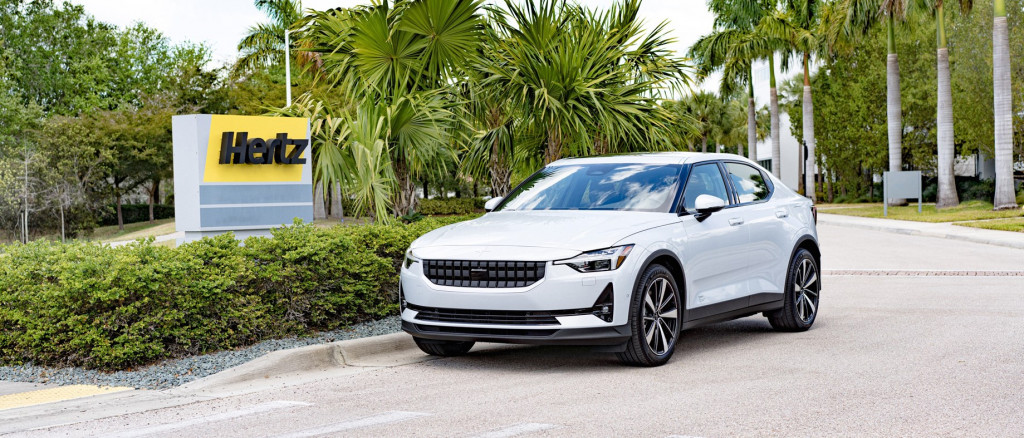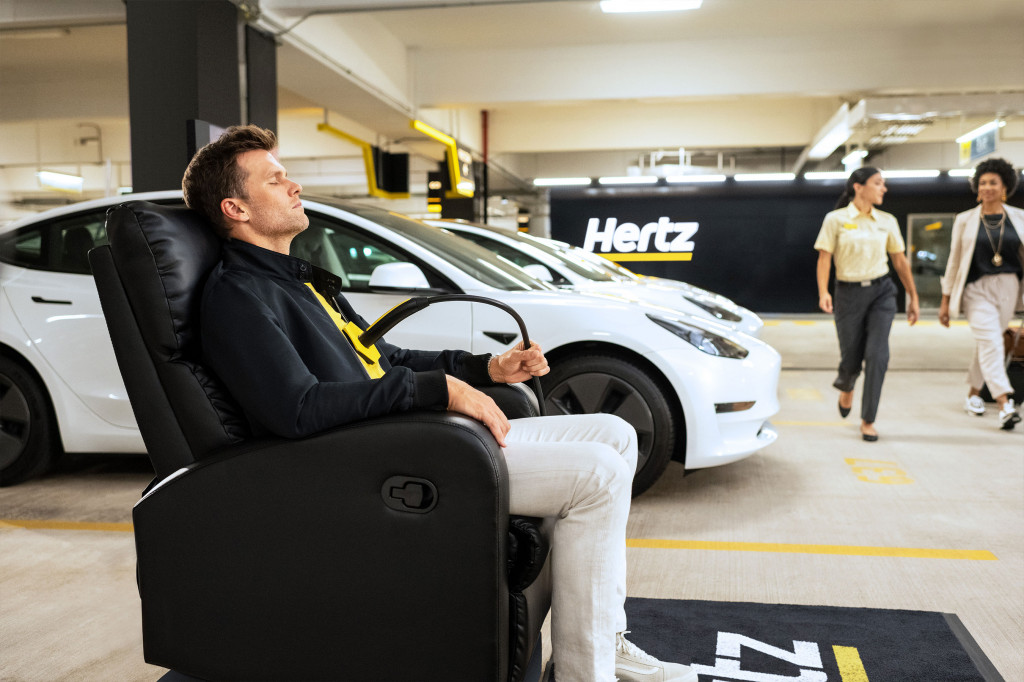Rental-car giant Hertz has announced several large-scale electric vehicle purchases from Tesla, GM, and Polestar, on the way to making EVs a quarter of its fleet by the end of 2024.
That’s a lot of EVs—tens of thousands of them, and once in place they would quickly overwhelm existing public fast-charging stations around airports. So on Tuesday, Hertz and BP announced the intent to develop a national network of thousands of EV charging stations explicitly for all those vehicles and for the public.

Polestar at Hertz
With a memorandum of understanding, BP will oversee charging infrastructure around Hertz locations. It will also write fleet software that will help charge at times advantageous for energy costs, which will in turn provide Hertz with a real-time understanding of its power usage.
As part of the agreement, BP's charging business called BP Pulse will also develop fast-charging hubs around high-demand rental locations, with access provided not just to Hertz customers but to the general public, it says. BP Pulse will manage charging directly at rental depot locations.
Charging to handle taxi and ride-hailing drivers is included in the effort, according to the companies.

Tesla at Hertz
The agreement marks the large-scale shift of two legacy companies toward EVs. Hertz is no stranger to EVs, though. As long ago as 2011, the rental company told Green Car Reports that it needed more EVs.
The energy giant that used to stand for petroleum has also shown plenty of signs that it’s committed to carving out a big piece of the EV charging market. Earlier this year BP acquired Tritium, a manufacturer of DC fast-charging hardware, and last year, after its acquisition of Amply Power, it rebranded the whole division BP Pulse with the goal of helping provide those fleet solutions.
The charging business is no loss leader. BP earlier this year suggested that its fast chargers are almost as profitable as gas pumps, on a margin basis. BP Pulse itself is now aiming for more than 100,000 chargers globally by 2030, 90% of which will be “rapid or ultra-fast chargers.”













